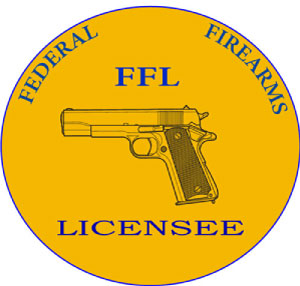ATF compliance isn’t a difficult thing to achieve for most federal firearms licensees (FFLs). But sometimes, the things we need to do, should do, or know we have to do are not pleasant, not otherwise gratifying, and may not seem to be profitable at first glance.
Therefore, many of the things that we should do to achieve and maintain compliance with ATF regulations get pushed aside, ignored, or put on a back burner that never gets turned on.
Unfortunately, with respect to ATF compliance, we have to work through that pain, and do some things that are tedious, detail oriented, and require focus and concentration.
In this series, I’m going address five things that FFLs can do relatively quickly, to mitigate ATF compliance failures and cited violations.
Firearms Inventory Rotation:
Inevitably, every gun store large or small will have a number of firearms in stock that they’re either unable to move quickly, or otherwise linger around the store for long periods of time.
Also, larger retailers have a tendency to order large numbers of firearms that move off the shelves quickly; this can actually cause inventory problems.
These two scenarios set the stage for potential firearms inventory errors, chaos, losses, and ATF violations.
Just like everything else, firearms need to move; hopefully to a willing buyer, but move nonetheless.
Firearms held in stock for a long period of time, for whatever reason, are problematic for inventory accuracy and management. Why?
- The FFL forgets they exist. I know they’re in the A&D book, right? Doesn’t matter.
- Guns have a tendency to grow legs, move themselves, hide, or otherwise disappear. Especially the guns the FFL forgot existed.
- Employees come and go, and sometimes guns go with them (sad but true). This is not noted for months or years afterwards.
- Mistakes are made in the A&D book. That rifle in that back room, under the tarp is logged in as sold by mistake. You haven’t looked under the tarp in two years, but the ATF IOI lifted it up during an inspection. Now you have two problems.
- Popular firearms sold are removed from the front of shelves by employees or other staff, leaving old stock to linger for months or years.
- Firearms could be removed from boxes which haven’t moved in months or years, and it wouldn’t be caught until a full inventory is completed.
There are other scenarios, as well. The point is that firearms should move, hopefully out the door, but move nonetheless.
- All firearms in stock should be visible if possible (except boxed)
- Move old stock firearms from the back of shelves to the front, and to the sales floor
- Firearms kept in storage rooms should be inventoried at regular intervals
Inventory that moves rapidly should rotated on the shelves. Firearms that come into inventory first, should be disposed first. Employees have a tendency to pull guns from the front of the shelves, and old stock lingers, and remains unsold for an unacceptable period of time. This may eventually cause inventory problems if practiced over a long period of time.
These simple steps help the FFL keep inventory fresh, and maintain active control of the inventory, raising red flags if irregularities are found. You’ll have a better grasp of what is actually in stock, and not what you think is that back room, or in that box.
This is the first of five installments. More to come.

